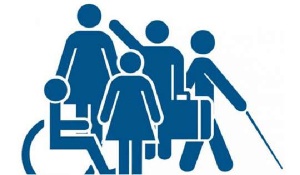Education is dynamic, especially for children with Special Educational Needs and Disabilities (SEND). The World Health Organisation suggests that approximately 15% of the global population live with some form of disability. The right education equips children with the skills useful into their future and can lessen their marginalization.
Advances in technology determine the skills needed for future jobs and meaningful contribution to society. Using technology to create innovative approaches to education can offer students the foundational skills that are desirable for future work.
Covid-19 has resulted in school closures, government restrictions and changing public health guidelines being implemented to keep learners safe. Models of learning largely remain the same as public schools follow the national curricula.
Only a few Ghanaian educational institutions are focused on providing the necessary support and interventions for SEND children unable to attend school.
The Government of Ghana (Ghana Learning Television (GL-TV)) and some media houses broadcast lessons for various subjects from kindergarten to secondary level. The only obvious accommodation made to SEND children in this form of delivery is sign language for the hearing impaired. While a few institutions provide some essential support for their students, most public schools in Ghana lack these opportunities. It is usually the case that low resourced educational institutions have problems with the basic supply and provision of teaching and learning materials.
Where the delivery of education is virtual, the priority for Special Educational Needs and Disability Coordinators (SENDCO)s, Inclusion managers and school management remains to provide the needed virtual support and intervention for students with special needs. SENDCOs and teachers are concerned about their lack of skills to implement virtual learning programs, which has meant leap-frogging from face-to-face to virtual teaching.
Challenges and solutions during Covid-19 Virtual Learning
Differing accommodations must be made for SEND students to enable their access to technology. Some students on the autism spectrum may have social communication, sensory, attention deficit, flexibility or other challenges that impede their efforts to engage in virtual learning. Others with cerebral palsy may have challenges with physical, gross and fine motor skills, denying them access to certain technologies. Students with visual impairments need additional applications installed on their devices, and the list goes on.
There are common barriers. These include access to quality broadband data, digital technology tools, unaffordable software and/or archaic, impractical equipment often donated by charitable organisations.
Supporting children/wards during online learning, requires parents and caregivers drawing on extra skills to address issues like Inattentiveness, noncompliance, frequently prompting children to refocus, or going offline because children are unable to continue to partake in sessions. Regarding autism, children are sometimes over-stimulated or distracted when they use iPads or laptops. Trying to focus, follow instructions, or other distractions like the novelty of new technologies (e.g. seeing themselves on the monitors/screens) can affect learning in the home environment. Of great concern is the digital safety of children, which is not very well addressed when access to online facilities is given without properly trained supervision. These concerns remind us of the sterling job teachers and classroom assistants do to support SEND children.
Covid-19 has changed the status quo. Technology offers teletherapy, online training for parents and professionals using tools such as Zoom and Telegram. There are other excellent applications (Apps) and tools beneficial to explore. All stakeholders (Teachers, therapists and parents) should be encouraged to embrace these avenues even after COVID-19.
The grim reality is that the disparity in access to good education and digital technology grows wider in schools remaining closed until the unforeseeable future (2021).
It is encouraging that Covid 19 has thrown the spotlight on the virtual education and the benefits offered if properly harnessed and supported.
How do we look into the future?
Participation in a globally-connected world means having exciting models of education to be pursued.
Develop the individual strength of a person as opposed to a group
Individualised learning based on subject areas and skills that give a person the tools to gain skills for future employment. Involving young people in the design of their own education and supporting them with coaches, mentors and facilitators.
Offer Flexibility in education
Offering modules designed to be flexible and that can be fitted in. Modules that are transferable into different models. e.g. WASSCE grades transferable to GCSE O Level, Open Educational Resources or informal online learning platforms like FutureLearn.
Respond to changing employment requirements
A flexible curriculum training people for global employment in the future.
These initiatives may seem complicated to explore especially in public schools and institutions which are guided by the national curriculum. However, we must continue to ensure inclusive and equitable quality education and promote lifelong learning opportunities for all (SDG 4, UN).
General News of Friday, 8 January 2021
Source: GNA













